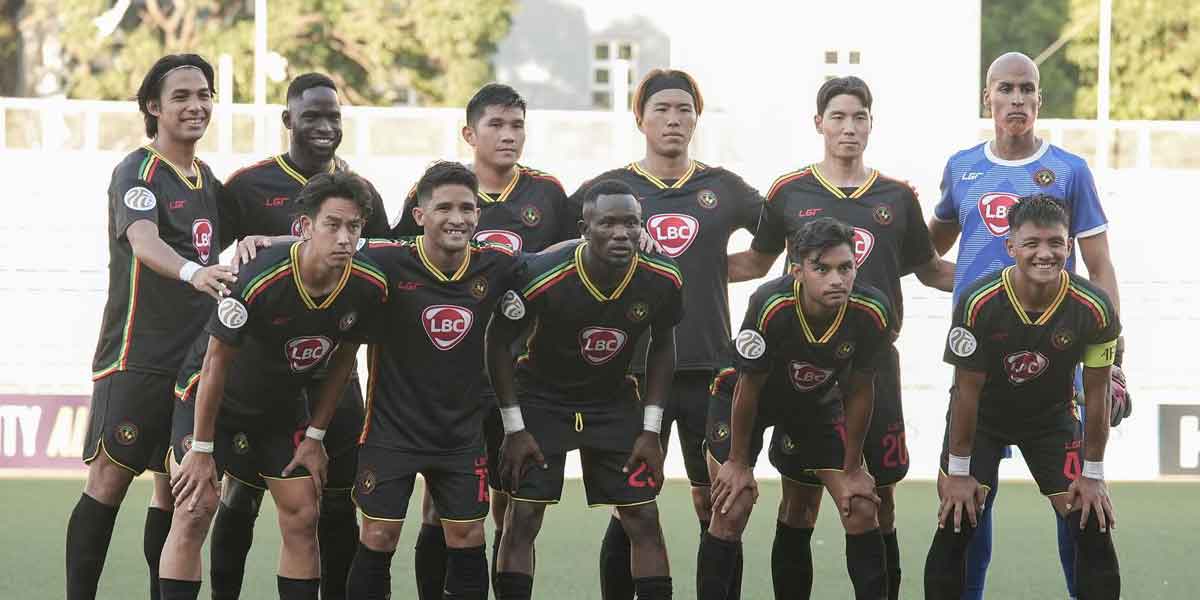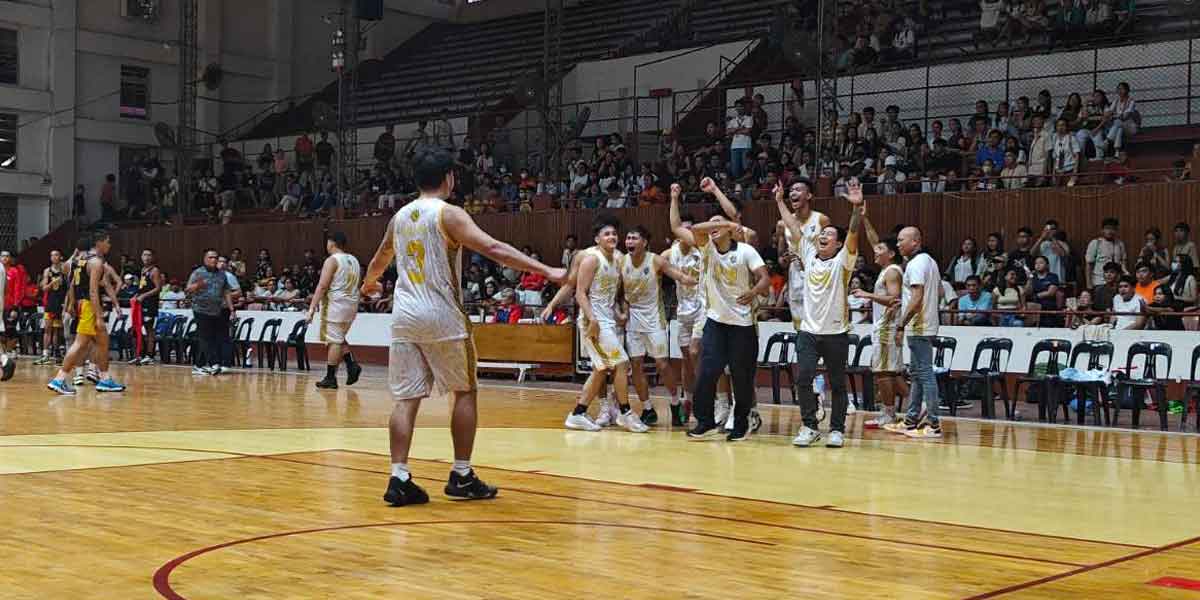The biggest recipient of Chinese foreign direct investments in the Philippines these days is the online or offshore gambling industry. Since Duterte assumed the presidency, real-estate companies, tours, hotels, and entertainment, as well as services across Metro Manila, Cebu, and the major cities have received the bulk of Chinese FDI, after wholesale and retail.
By: Alvin A. Camba
Contributor/Fellow, Philippine Center for Investigative Journalism
THE FOURTH state visit to China of President Rodrigo R. Duterte just two weeks ago is said to have yielded business deals worth a total of US$12.165 billion and a grant of one billion renminbi (about US$148.5 million). The Duterte administration has also said that the deals alone could generate more than 21,000 jobs. So far, however, there seems to be little enthusiasm from the Filipino public over these supposedly laudable results from the Presidents latest China trip.
A possible reason for this is the public perception that the Duterte administration has been complicit to Chinese activities in the South China/West Philippine Sea in exchange for deals such as these. This perception in fact is already affecting the publics reaction to the increasing presence of Chinese nationals in the country, which is being met with wariness, if not outright hostility. And yet, academics are in dispute on whether or not Chinese foreign direct investment or FDI has actually increased under Duterte.
My own research shows that FDI has surged since Duterte took office. But it also shows that Chinese investment was still coming in during the presidency of Benigno Noynoy S. Aquino III, who had taken China to the international arbitration court at The Hague on the matter of the South China/West Philippine Sea. The inflow of Chinese FDI during Aquino IIIs term indicates that Chinese firms are capable of overlooking Beijings differences with another government and put their money where they think it will be worth the effort. In other words, Chinese firms act not with emotion, but with practicality. They do business for profit and to serve their own interests. They do not necessarily bother themselves with the question of whether or not their presence or monies benefit the people of the country in which they invest. In the real world, that should actually be the lookout of the recipient nations officials and business executives.
Lower amounts for PH
Chinese foreign capital (FDI, development finance, and other forms of finances) in the Philippines actually lags behind comparable low to high-middle income states in Southeast Asia. While the numbers could change in the next few years, the Philippines currently has one of the lowest amounts of Chinese FDI and official development assistance (ODA) in the region.
This lack of Chinese foreign capital should be examined in the context of the Philippines development strategy, which has been on the upward trajectory in the past few years, but has remained slowed, stagnant, and short-sighted. Indeed, the main comparative advantage of the country, the Business Process Outsourcing (BPO) sector, is bound to decline due to the expansion of artificial intelligence and new innovations; the sector cannot keep up with the number of fresh graduates that the Philippines produces every year.
Apart from the BPO sector, the country has been kept afloat due to the reliance on exporting labor to generate foreign remittance inflows and bolster domestic consumption. But this strategy encourages brain drain or outmigration and relies on servitude in other states. In the meantime, our middle-income Southeast Asian neighbors have made it a crucial policy to actively tap Chinese FDI, culminating in developmental ventures that stress technology transfer, value-chain upgrading, and skills transfer.
While the Aquino III administration was lauded for its economic reforms, the development strategy during its term was short-sighted and did not build up the states real economic foundations. In 2009, at the tail-end of the Arroyo era, international capital markets experienced a huge influx of hot money due to the U.S. Federal Reserves quantitative easing. In this context, Philippine National Corporations or PNCs capitalized on the influx of hot money in capital markets to fund their commercial ventures. The Aquino III administration later relied on Public-Private Partnership (PPP) that empowered the PNCs to spearhead Philippine infrastructure construction. But the PNCs were overly cautious, which resulted in institutional paralysis and painfully slow progress, leading to the completion of only a few large-scale projects.
Aquino IIIs PPP thus failed to lay down the foundations for a sustainable and competitive Philippine economy. When quantitative easing ended in 2015, much of the hot money placed in capital markets left in favor of the recovering U.S. stock market.
At the end of Aquino IIIs term, numerous Philippine cities with surging populations needed even more infrastructure services to support their quality of life. Infrastructure was also necessary to offset the cost of production, which would have attracted more FDI into the country. But Aquino IIIs overly cautious and PNC-friendly strategy constrained the infrastructure buildup that the Philippines needed to take the next step in economic development. Diversifying the economic portfolio, sustaining long-term growth, and improving quality of life cannot occur without the massive infrastructure investment and FDI to generate jobs.
Most of the Philippines foreign direct investments come from Japan, the United States, the Netherlands, and Singapore. China, however, has emerged to be one of the biggest sources of FDI in the world, jumping from a few hundred million U.S. dollars to US$1.3 trillion in 2015, which necessitate our policymakers to attract Chinese investments to bolster Philippine development. Hong Kong has also become the major offshore gateway for many Chinese firms. In 2015, Hong Kongs FDI stock amounted to US$1.4 trillion.
Attracting FDI — long-term, managerial control of assets in the host state, via greenfield investments, joint ventures, and acquisition of controlling stakes — is extremely necessary for developing countries. Since the 1980s, countries across the globe have competed for FDI in order to achieve their developmental goals, such as revenue generation, employment, and skills transfer.
Eye on profits still
When it comes to Chinese FDI, however, there have been growing concerns about its inherent differences from more normal, usual FDI. A popular notion is that that every Chinese firm is fully control and funded by the Chinese Communist Party (CCP). This is empirically misleading. Many Chinese firms go to Hong Kong to create subsidiaries in order to acquire financing from international syndicate loans, which usually come from Western and global private institutions. This goes back to how the Chinese government tempers the amount of FDI that goes to the developing world. While the conditions of the loans vary largely, one common feature is the weight assigned to commercial considerations and financial returns. These conditions make Chinese FDI behave closer to Western and conventional foreign investments.
The Philippines China pivot came later compared to its Southeast Asian neighbors. It began in 2016, shortly after Duterte became president. Within months after his presidential inauguration, he went on a trip to Beijing and brought home an earmarked US$24 billion worth of FDI, construction contracts, and ODA.
But many have argued that even after two whole years, Chinese investments have not yet reached these amounts. Notwithstanding the wrong expectations on both sides, this issue brings about a crucial question: how much is Chinese FDI in the Philippines?
In order to overcome data limitations, I used the Security Exchange Commissions firm-registration to create a dataset on the annual number of new firms with Chinese FDI, which is defined as China money having more than 10 percent of shares.
Fig. 1 Chinese foreign investments, across Philippine Presidents, 1990-2017.

Figure 1 shows that the number of new firms with Chinese FDI across six different Philippine presidents from Corazon Aquino to Rodrigo Duterte. Chinese investments in the post-Marcos era initially began in the early 1990s. The figure also shows, though, that the number of firms vastly increased from 2002 onward, jumping from an average of 309 and 541 during the Arroyo and Aquino administrations respectively to 1,092 during the first two years of the Duterte presidency.
In the early 1990s, the dataset shows, there were very few firms with Chinese FDI until Arroyo came into power. This lack of investments, however, cannot be attributed to Chinas lack of willingness to invest. After all, in the early 1990s, Chinese ODA increased in sub-Saharan Africa while Thailand, Vietnam, and Zambia were some of the first states to received substantial Chinese FDI.
Chinese FDI initially expanded in the natural resource industry, enabling Chinese state-owned enterprises or SOEs to import minerals to supply Chinas export sector, which sent manufactured goods to the West. The uptick of Chinese FDI during the Arroyo administration, however, can be explained by Arroyos foreign policy and development strategies, which wanted to bring the Philippines closer to China, and also Chinas Go Out Policy or ?????, which encouraged Chinese enterprises to invest outside. In the mid-2000s, legal reforms in China allowed Chinese SOEs and private enterprises to pursue mergers and acquisitions; previously, this had not been permitted by Beijing.
More under Aquino
Notably, the dataset demonstrates that despite Aquino IIIs firm stance in the South China Sea/West Philippine Sea, which had angered Beijing, the number of firms with Chinese shareholders almost doubled those of Gloria Macapagal-Arroyos time. This only indicates that the disputes did little to interrupt the economic relationships between Chinese and Philippine business partners.
The increasing number of firms with Chinese investments after 2010 or during the Aquino III presidency — can be explained by the Philippines economic growth. After 2008, the financial crisis limited Western manufacturing consumers and forced China to diversify its investment portfolio. Thus, Chinese investments after the financial crisis started to expand in information technology, the entertainment industry, and finance. There were several variables that also mattered to this broader macroeconomic trend: the falling rate of profitability and shift of the Chinese economy from export manufacturing to consumption, the steady growth of the Philippine economy, and Arroyo and Aquino IIIs institutional reforms. Another way of putting it is that the economic relations and motivations between Filipino and Chinese citizens, perceived improved Philippine economy during the Aquino III administration, and inertia of economic reforms since the 1990s accounted for the rise of Chinese FDI.
Nonetheless, Aquino IIIs conflictual relations with China in the West Philippine Sea and his somewhat negative treatment of some Chinese investments affected potential investments. In truth, one can argue that Chinese investments increased not because, but in spite, of Aquinos policies.
Far bigger under DU30
Dutertes pivot to China, though, clearly led to the massive rise in the annual number of new firms with Chinese investments. As the data show, the number of firms with Chinese FDI increased by leaps and bounds under Duterte, jumping from around 500 to 600 during Aquino to 1,257 in 2017.
These increases across presidents can be seen in aggregate via the Bangko Sentral ng Pilipinas dataset, which shows that during the Aquino III administration (2010 Q3-2016 Q2), Chinas FDI inflows amounted to US$51.321 million while that of Hong Kong aggregated to US$1,180.75 million. Similarly, within two years Dutertes term (2016 Q3-2018 Q3), Chinas inflows reached US$ $211 million but those of Hong Kong aggregated to US$984.51 million. While these amounts seem to disappoint, Chinas inflows during the second year of the Duterte administration already make up more than 83 percent of comparable inflows of the entire Aquino III administration and surpassed the entirety of Chinese and Hong Kong investment received under President Gloria Arroyo (US$828 million).
It is possible that Chinese FDI would have been higher had Aquino reconciled and negotiated with Beijing. By pursuing a middle-ground solution with China about the dispute, Aquino may have been able to acquire Chinese FDI at a higher rate without giving up the South China Sea claim. Similarly, however, there would have been no need for Duterte to give up the legal claim in practice but pursued a different solution. Chinese FDI would have been forthcoming anyway, so long as Beijing perceived the conditions on the ground as beneficial to it.
How good? How bad?
But how beneficial have Chinese monies been to the Philippines? To be clear about it, Chinese capital is available external capital apart from the conventional financial sources that can be targeted toward critical and strategic economic sectors that can raise the quality of life in the Philippines.
For instance, Chinese loans and aid can supplement Japanese capital, which has been our largest source of financing for infrastructure apart from Western commercial loans. Chinese foreign investors can put their money in critical sectors that conventional foreign investors see as too costly.
The biggest problem for foreign investors in the Philippines is the lack of infrastructure and the high cost of basic goods, which make labor and operations artificially expensive. While Aquino III managed inflation well and the recent price increase can be attributed to Dutertes Build, Build, Build push compared to other middle-income Southeast Asian states, the average cost of basic goods (such as food, energy, and yes, Internet service) remains high while the quality can be low.
The Philippines can use Chinese loans and aid to invest in critical sectors, build infrastructure for quality-of-life issues, and keep up with its Southeast Asian neighbors. But these FDIs must be targeted toward carefully managed sectors that could generate jobs and instigate a multiplier effect across industries. For loans, development finance, or aid, these must be carefully managed and targeted toward infrastructure and connectivity-oriented projects.
The case of KL, Jakarta
My recent fieldwork in Malaysias Pahang province and Central Sulawesi in Indonesia reveals that both these countries have been able to strategically channel Chinese FDI toward economically least-developed provinces, generating jobs for thousands and spurring economic growth in the regions. In Pahang, the Malaysia-China Kuantan Industrial Park (MCKIP) produces high-carbon steel and H-shaped steel. The park has a 51-percent investment from the Malaysian Government and 49 percent from Alliance Steel (M) SdnBhd, a subsidiary from of Guangxi Beibu Gulf Iron and Steel Co Ltd from China. Strategically located in Malaysias eastern seas, this park employs thousands in the area, provides social services in the province, and renders revenue to the government.
Similarly, the Indonesia Morowali Industrial Park (IMIP) houses multiple investors from Australia, Korea, China, and Indonesia. Chinas Tsingshan Holding Group and Indonesias PT Bintang Delapan, the main investors, created a consortium to mine nickel and process steel in the island. The consortium purchases primary nickel ore from miners across Indonesia and processes the ore within the park. IMIP employs 30,000 local workers, 3,000 temporary Chinese expats, and 10,000 contractual workers. While the park could still be improved, IMIP provides jobs to the greater Morowali area and Sulawesi as a whole, and pays an enormous amount of revenue to the Indonesia government. The consortium has invested in free clinics, which people across Sulawesi can use, built a vocational school to train the locals, and improved infrastructure in the area. Inside the park, there are eight mosques that workers can use during the day.
Pointing to these two examples is not meant to glorify Chinese investments. For sure, in Sulawesi, there are hundreds of artisanal small-scale mining companies owned by Western, Indonesian, or Indonesian Chinese, that focus on mineral extraction and disregard the socio-environmental ramifications. At the same time, however, for large-scale mines, there are Chinese and non-Chinese companies in Sulawesi that do not seem as socially-oriented as IMIP. While the Chinese nationality of these firms point to some common processes, such as access to capital markets and Chinese technologies, these examples provide proof that we cannot just subsume the organizational logic, social impact, and behavior of firms using nationality.
Fig. 2 Which Philippine regions are drawing Chinese investments?

NCR, big cities get bulk
So in the Philippines, where do firms with Chinese FDI open their offices? Figure 2 illustrates the number of firms with Chinese investments across regions in the Philippines, demonstrating that Metro Manila, Central Luzon, Calabarzon, Central Visayas, and the Davao del Sur region received the highest shares.
The dataset shows that 57 percent or 4,445 of the 7,755 firms with Chinese investments are in the National Capital Region, or in the 16 cities of Metro Manila. In these cities, the three major Central Business Districts (CBDs) have the greatest number of firms with Chinese FDI. Disaggregating the CBDs further, Makatis Ayala has 79 firms, and Taguigs Bonifacio Global City showcases 41 firms and Ayala has 59 firms. In Pasig and Mandaluyong area, Ortigas Center has 268 and Eastwood has 71. Makati City, as the nations business capital, has 426 of these firms. In Quezon City, the largest city in the Philippines in terms of land area and population size, there are 645 firms, and the Binondo district, the historical Chinese neighborhood, comprise 520 firms.
Chinese investments outside Metro Manila are concentrated in regions where investment promotion agencies (IPAs) exercise jurisdictional prerogative to invite, verify, and approve foreign investments. Foreign investors in the Philippines do not need to primarily go through the Department of Trade and Industrys (DTI) Board of Investments (BOI), which receives foreign investment applications across the country in non-IPA administered zones. The Philippine Economic Zone Authority (PEZA) manages all the special economic zones (SEZs) that give economic incentives, tax holidays, and exemption from certain laws to firms with a substantial share of foreign investments.
There are several examples of IPAs that stand out for Chinese FDI. The Clark Economic Zone Authority (CEZA) and Subic Metropolitan Authority (SBMA) located in former U.S. military bases in Central Luzon have become major industrial zones for electronic-chip assembly. Apart from these two, smaller SEZs across Cavite and Laguna have become major conduits of manufacturing or chip-assembly factories for foreign capital.
Which sectors in the Philippines have the greatest number of Chinese firms? Figure 3 shows the number of firms with Chinese investments across sectors. The dataset shows that the top five sectors in terms of Chinese investments are wholesale and retail, business activities, real estate, light manufacturing, and financial holdings.
While SEZs in Central Luzon, Calabarzon, and Davao del Sur comprise light manufacturing, all of the other sectors typically operate outside of the SEZs. Substantial amounts of Chinese investments can be found in wholesale and retail, and targeted toward the domestic market. Wholesale and retail are conventionally dominated by middle- and upper middle-class businessmen, local firms with ties to domestic elites, and small-and-medium enterprises that sell food items, clothing, motor vehicles, and all sorts of necessities to Filipinos. Business activities, which consist of services and auxiliary activities, are the second most targeted sector. Both sectors are also prime targets of espionage from security services since it is not difficult to set up fronts for these organizations.
Fig. 3. Which sectors of the economy are drawing Chinese investments?

Gambling top drawer now
Since Duterte assumed the presidency, however, real-estate companies, tours, hotels, and entertainment, as well as services across Metro Manila, Cebu, and major Philippine cities have received the most amount of Chinese FDI, after wholesale and retail. Offshore gambling, small hotels, and resorts have reportedly been acquired to target the broader Chinese consumption class and tourists. This shows that apart from the major real-estate companies of the Sys, Ayalas, and Villars, smaller business elites with the help of Chinese investments also participate in the expansion of land, housing, and real estate. Many of the offshore gambling firms, which started in the SEZs, have relocated to the cities and belong to these three categories.
The biggest recipient of Chinese FDIs in the Philippines these days is the online or offshore gambling industry. This sector, however, does not largely benefit Filipinos and has spurred unintended socioeconomic spillovers. Still, banning the sector would be too harsh because of the positive economic multiplier that the sector provides to the construction and real estate industry. The better alternative seems to be to directly tax and regulate the offshore gambling sector.
Some observers have said that Chinese FDI and aid are debt-inducing, corrosive, or simply dangerous. Yet, these criticisms simply do not look at the statistical evidence that Chinese FDI and aid have generated positive economic growth across the world. Other observers have said as well that we can simply rely on Japan due to the low interest rates and due diligence of the Japanese. But the Japanese agencies cannot fund everything because of limits on their end. More importantly, in some situations, Japanese projects are simply more expensive than the Chinese. Japanese companies are also not as aggressive as Chinese companies. Japan has been investing and sending aid to the Philippines since the 1950s. Similarly, the Philippines has been actively and seeking Japanese aid. And yet, results show that project completion and targeting have been slow, resulting in the rollover of one project to another, and that our economy has remained stagnant.
Japanese investors are well-connected and know how to play Philippine politics. As such, they would not invest in financially and politically risky yet economically important sectors that could generate growth. The Chinese would do that, but the key is to have a strong host state coalition that can renegotiate with China and investors.
Many small M&As
There is no doubt that Chinese FDIs have been expanding in the Philippines since the Arroyo administration. But these have been far smaller mergers and acquisitions that do not generate the same effects as a large-scale investment. A few deals involve bigger Chinese investments in joint ventures with Philippine National Corporations, which do not really generate new jobs for Filipinos. These investments may have contributed to growth, but their real impact has been to allow Philippine large and small capital to diversify their funders and invest elsewhere.
For Chinese aid and financing, Duterte could have done better in two ways.
First, Duterte could have leveraged his newfound friendship with China to acquire better deals. Recent reports on the Philippines contractual obligations on the approved deals, such as commodity-base payments and China-driven arbitration, have spurred intense domestic opposition against these projects.
Comparatively, these projects are not terrible per se; rather, they are comparable to many BRI (Belt and Road Initiative, a Beijing brainchild that is supposed to improve relations with other countries through infrastructure projects) and non-BRI Chinese projects across the world. But these issues could have been prevented had the Duterte government bargained for better terms. Indonesian President Joko Widodos Jakarta-Bandung High-Speed Railway Project, which has generous terms, demonstrates that China can be flexible. (Malaysias Kuantan and Indonesias Morowali industrial parks in Malaysia and Indonesia have become the models for the newly planned Mindanao steel plant and the Chinese-Ayala industrial park in Central Luzon. Unlike mergers, offshore gambling, or real estate, these plans appear to target productive sectors of the economy, generate revenues, and create jobs for Filipinos. The state and civil society, however, need to limit the possible socio-environmental consequences of these projects.)
Second, the Duterte government could have used BRI to fund new projects rather than choose ones that already had a slated budget. At the start of Dutertes term, Philippine funding for the Kaliwa Dam and the Chico River Pump finally became available. Yet, the Duterte government canceled the PPP financing of these projects, opting to instead for BRI financing, which delayed the implementation process.
Current events point to forthcoming major projects with China money, even as the SECs firm-registration data confirm that the number of Chinese companies in the Philippines has already surged during the first three years of Rodrigo Dutertes administration. Given these, academics and the press should stop focusing on whether or not Chinese foreign capital has increased in the Philippines. Rather, the focus should be on the developmental quality of the investments, who benefits and who loses, and the compliance of foreign capital to Philippine national laws. PCIJ, May 2019
*Alvin A. Camba is a China Initiative Fellow at the Global Development Policy Center and a Ph.D. Candidate at Johns Hopkins University in Baltimore, Maryland. He works on the political economy of Chinese foreign capital and elite theory. His works can be found at alvincamba.com.






















